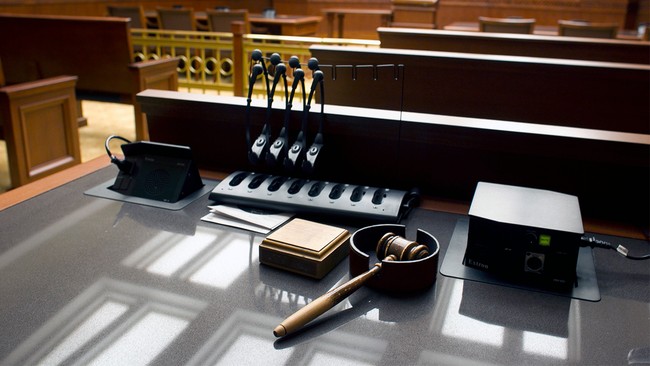In April, 2022, a 23-year-old from Fairfax, Virginia opened fire from a Washington, D.C. apartment, injuring four people before taking his own life. One of the victims of the shooting filed a $75 million lawsuit several months later that sought to blame a number of companies in the firearms industry responsible for the crime, including Daniel Defense, Magpul Industries, and Vista Outdoors.
In her initial complaint, Karen Lowy and her attorneys claimed that the companies “have deceptively and unfairly marketed their assault rifles, rifle accessories, and ammunition in ways designed to appeal to the impulsive, risk-taking tendencies of civilian adolescent and post-adolescent males—the same category of consumers Defendants have watched, time after time, commit the type of mass shooting that unfolded again at the Edmund Burke School.”
Now a federal judge has thrown out the lawsuit, ruling that Lowy failed to back up those claims with facts.
Here, a third party bridges the alleged causal chain between defendants’ conduct and plaintiffs’ injuries. At the beginning of the alleged causal chain, defendants marketed their weapons and weapons accessories to potential consumers in Virginia. At the end, Shooter injured plaintiffs by firing at an elementary school. This chain relies on Shooter, a third party not before the Court, to link defendants to plaintiffs’ injuries.
Accordingly, to establish standing against defendants, plaintiffs must allege that defendants’ conduct had a determinative or coercive effect upon Shooter’s actions.Much of plaintiffs’ complaint concerns defendants’ marketing to Virginia residents generally and “young men like the Shooter,” id. { 57, but few paragraphs allege the effect of defendants’ marketing on Shooter specifically. To link Shooter’s actions to Defendant Daniel Defense, LLC, for example, plaintiffs plead that Daniel Defense “advertised to Virginia residents such as the Shooter,” and allege “[upon information and belief, the Shooter relied on Defendant Daniel Defense, LLC’s advertisements to purchase the DDM4 V7 rifle and DD magazine.”
These allegations fail for two reasons.
First, concerning Shooter’s reliance on defendants’ marketing, plaintiffs’ allegations are conclusory. Generally, a plaintiff may plead “based on ‘information and belief if such plaintiff is in a position of uncertainty because the necessary evidence is controlled by the defendant.” But, like all other allegations, allegations pled upon information and belief “may not be wholly conclusory.” If “not supported by any well-pled facts that exist independent of [plaintiffs’) legal conclusions,” allegations pled upon information and belief fail. Such is the case here: no factual allegations in the complaint support the conclusion that Shooter relied on defendants’ marketing. The complaint does not suggest defendants control such evidence of Shooter’s reliance and does no more than speculate that Shooter, like other young men in Virginia, observed defendants’ advertisements.
Without more support, these pleadings fail to raise plaintiffs’ right to relief above the speculative level and can proceed no further.Second, viewed most optimistically, plaintiffs allege that Shooter relied on defendants’ advertisements when choosing to purchase defendants’ products. The Court cannot transform that allegation into an allegation that defendants’ marketing had a “determinative or coercive effect” on Shooters’ decision to shoot at plaintiffs. While the bounds of Article III’s causation requirement may at times seem opaque, “[c]ausation
makes its most useful contribution to standing analysis in circumstances that show a clear break in the causal chain.Here, the actions of a third party injured plaintiffs. As explained above, completing the causal chain requires plaintiffs to allege
defendants’ conduct had a determinative or coercive effect on that third party’s injurious actions. This complaint, however, fails to make that allegation. Maybe defendants’ advertising coerced Shooter to purchase defendants’ products (and that allegation, as discussed above, is speculative), but absent is any allegation that defendants’ advertising coerced Shooter to attack the elementary school. Without that allegation, plaintiffs’ alleged causal chain is incomplete, and plaintiffs lack standing against these defendants.
U.S. District Judge Claude Hilton went on to say that even if Lowy had been able to produce evidence that the shooter was motivated to shoot people because he saw a gun ad, the Protection of Lawful Commerce in Arms Act would have precluded the case from going forward. I’m glad to see that Hilton didn’t solely rely on the PLCAA in his decision to dismiss the case against these companies, but instead highlighted the vacuous nature of the claims that the shooter must have been goaded into his criminal activity by the marketing of companies like Daniel Defense and Magpul.
The only person to blame for this shooting is the shooter himself, and because he took his own life Lowy won’t be able to get justice in a criminal court. As frustrating as that undoubtedly is, it doesn’t justify scapegoating gun, ammo, and accessory companies for his crimes, and Judge Hilton made the right call in dismissing Lowy’s lawsuit.
Read the full article here


